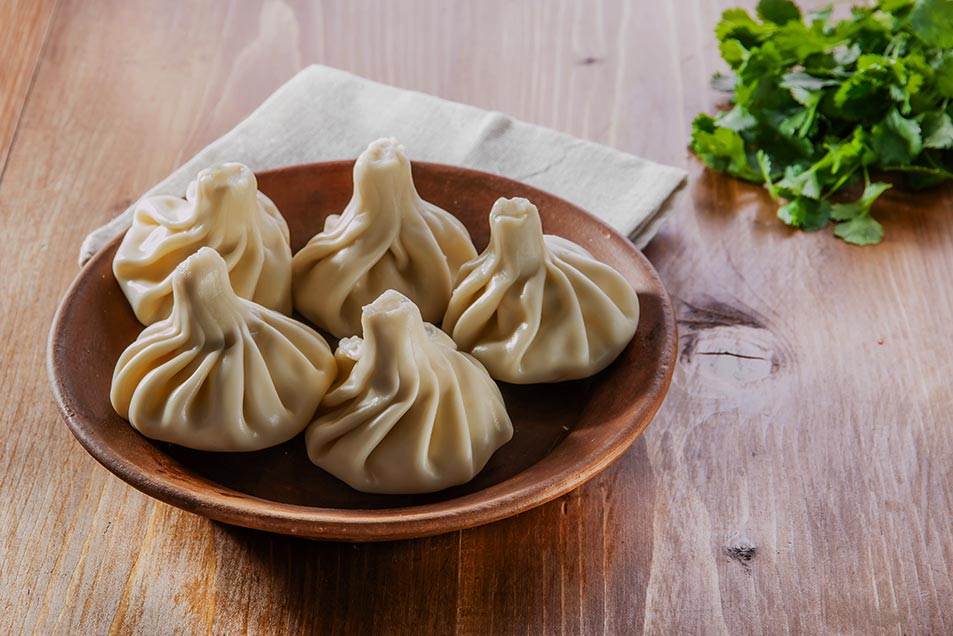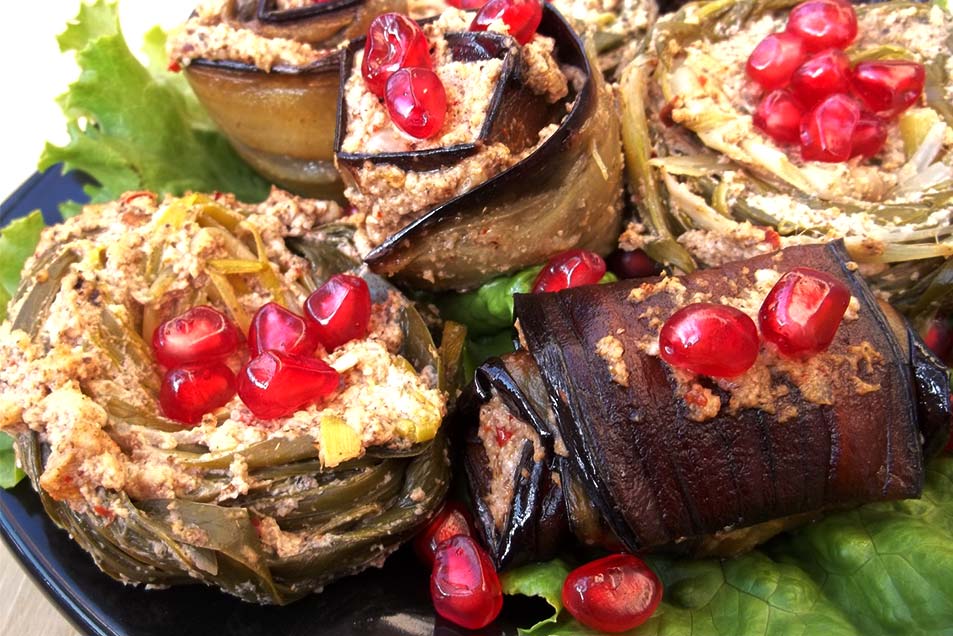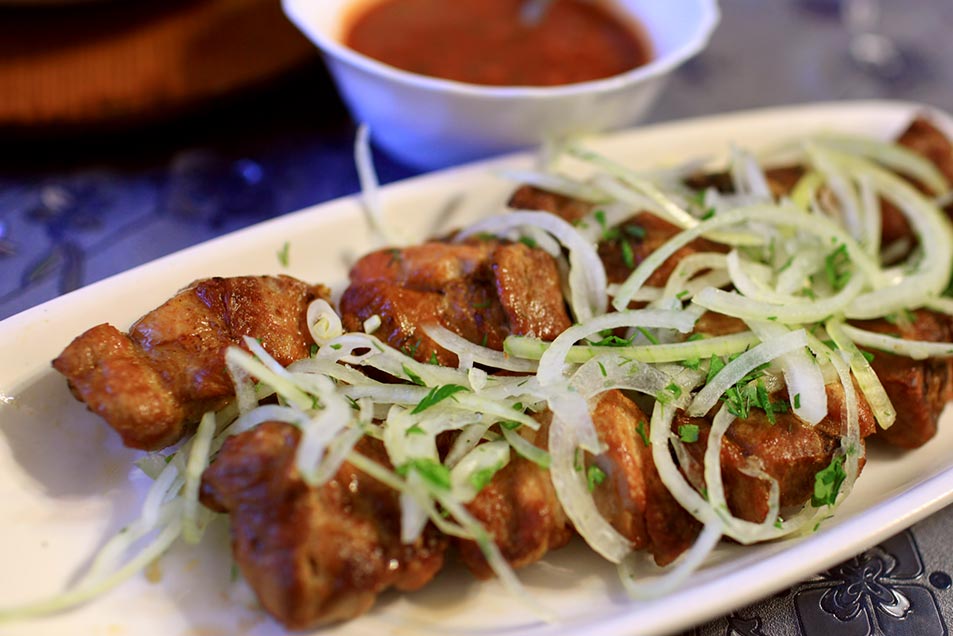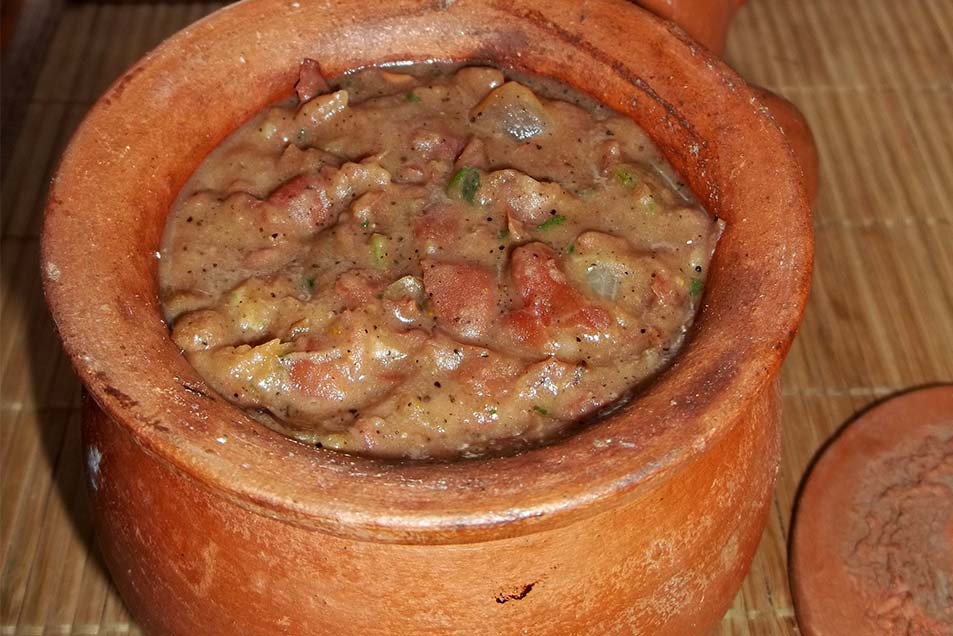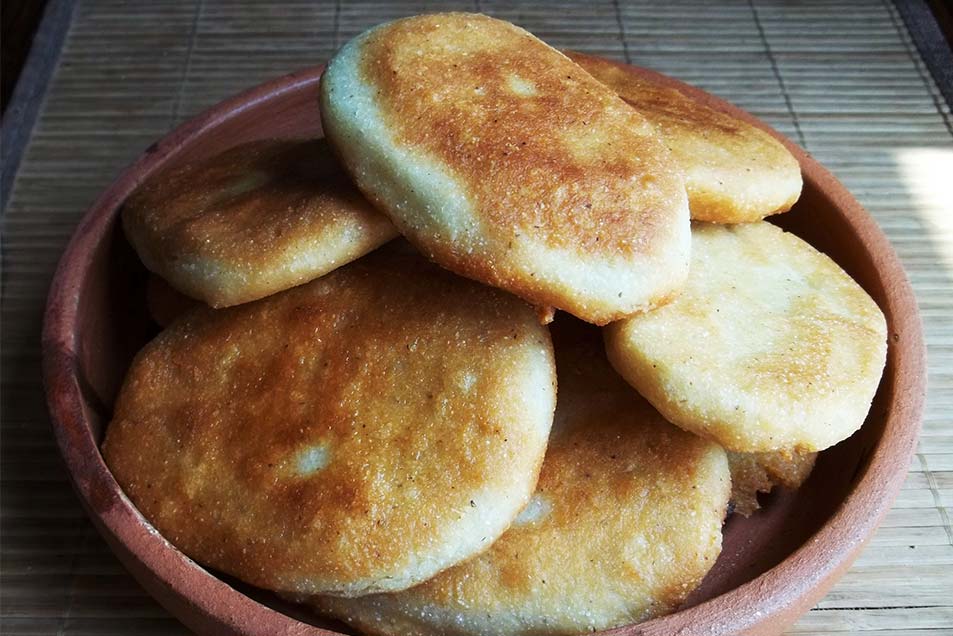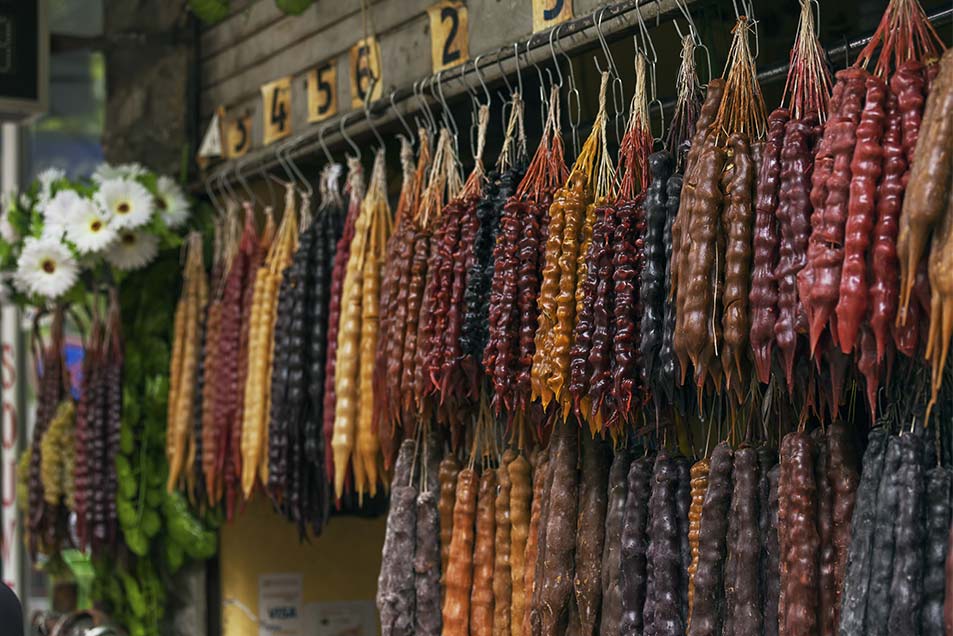All the Best Georgian Food, Supras, and Why It’s the Best Food Culture in the World
In a small clearing, a group of us sat around a table laden with traditional Georgian dishes, everyone talking loudly. Strings of lights in the surrounding trees illuminated our small group, and our host brought dish after dish to the table from the kitchen. We were at a supra, a traditional Georgian feast in the Republic of Georgia, and the tamada, or toastmaster of the feast, had already made the first toast. The drinking vessel of choice this round was a giant sheep’s horn, and it was so big in order to drink out of it, it was wrapped around my arm from fingers to elbow. The horn contained two full glasses of homemade white Georgian wine, and it was considered a matter of honor to drink every last drop after a toast was made. I rasied my arm, “Gamarjos!” and gulped the wine down, trying hard to finish what was probably my 6th glass of wine that evening. When I finished, I turned the sheep’s horn over, and shouting errupted from around the group— not a drop had spilled out of the horn, I had finished the wine in one go.
* * *
There is no place that embodies such a rich experience of food and culture as the Republic of Georgia. The Georgian cultural experience of food, toasts, and the amazing wine to be sampled, all of which which comprise a supra, far exceeds any place I’ve ever been. Supras (სუფრა), literally meaning tablecloth in Georgian, can last for hours. The tamada (toastmaster) proposes a toast during the feast, which is traditionally about God, Georgia, family, friends, ancestors, or a toast to women in the room, and once everyone around the table has contributed their own toast on the subject, the cycle begins again. Each round will have its own drinking vessel, ranging from the Chinchilla, which holds a small amount of wine but is drunk slowly with the head tilted back, open-mouthed, to the kantsi— made from herd animal horns which can hold several glases of wine depending on the size. It’s considered a matter of honor to fully drink each glass clean after a toast, although women are able to drink as much or as little as they desire without losing face. The men however, are expected to fully finish each round. At the supra, one round of toasts included a drinking vessel which held nine glasses of wine, which all the men around the table had to drink. I declined.
Georgian cuisine is now one of my favorites, although unfortunately, it isn’t commonly available back home in the states. To rememdy this, below is a list of my favorite Georgian food, along with a recipe link. Gamarjos!
1. Khinkali (ხინკალი)
Khinkali is essentially a Georgian dumpling, large enough to fill the palm of a hand. They’re filled with pork and beef (sometimes ground lamb, or mushrooms), and spiced with chiles, cilantro, and fenugreek. The best part about Khinkali, aside from how amazing they taste, is the cultural component of eating them. The Khinkali are sprinkled with fine ground black pepper, held it by the stem, then slowly eaten around the outside (starting at the top) by sucking the juice out of the dumpling as it’s eaten around the edges. At the end, all that’s left is the stem— and a pile of Khinkali stems on one’s plate is seen as a victory. If a drop of the precious Khinkali juice is spilled onto the plate, not only is it considered bad form, it’s also a sign that the person consuming the Khinkali is a bad kisser. One unfortunate afternoon, early on in my Khinkali eating experience, the Khinkali split open spilling juice onto my pants in front of several attractive Georgian men. Win some, lose some.
2. Badrijani (ბადრიჯანი)
The first time I saw Badrijani, I wasn’t sure what to make of the beautiful squares set on a plate, adorned by a small red pomegrante seed perched on top. It looked so festive, and I couldn’t actually tell it was eggplant. Don’t let this unusual looking dish fool you, it’s delicious and vegetarian.
3. Mtsvadi (მწვადი)
One of my brother’s favorites, Mtsvadi is skewered barbequed lamb (sometimes beef or pork) served on a plate with sliced onions. It’s a bit expensive compared to other dishes, but we ate it with almost every meal we had in a Georgian restauraunt.
4. Khachapuri (ხაჭაპური)
Khachapuri is sometimes referred to as Georgian pizza, but pizza it is not. It’s served piping hot from the oven, its outer cripsy dough gistening golden brown with a sheen of butter on the outside. Once cut into triangle pieces, local cheese can be seen melted inside. On my way back to Tbilisi to catch my flight, I ate an entire khachapuri which is essentially the equivalent of eating an entire pizza— and it was wonderful. My brother’s host Grandmother also makes the most wonderful khachapuri and I still think about it, salivating.
5. Ajarian Khachapuri (ხაჭაპური)
Ajarian Khachapuri is another type of khachapuri shaped like a boat sporting an egg on top and loaded with butter. I was frequently asked if I had tried this traditional dish by Georgians, and due to my delicate stomach after all the travel, I had to decline— to my eternal sadness.
6. Lobio (ლობიო)
Lobio is a vegetarian bean stew made with marinated vegetables and served in a traditional clay pot. Pair it with mchadi for a delicious vegetarian meal.
7. Mchadi (მჭადი)
Mchadi is a dense cornbread made with stone-ground cornmeal. My brother’s host mother and Grandmother made wonderful mchadi in Guria, and I ate more of these than necessary when I was staying with them.
8. Churchkhela ( ჩურჩხელა)
When I first saw a line of Churchkhela hanging on a rack the side of the road, I thought they were candles. “No,” my brother explained, “They’re like fruit leather with nuts inside.”
Churchkhela are considered the national sweet of Georgia, created by stringing quartered walnuts (or hazelnuts) on a wire, which are then left to dry. Grape juice is boiled with sugar and flour to create a syrup, which the wires of nuts are dipped into, dried, then dipped again. One there is a thick enough coat, the Churchkhela are left to dry for a few days.
Make some of these amazing Georgian dishes and host your own supra!

